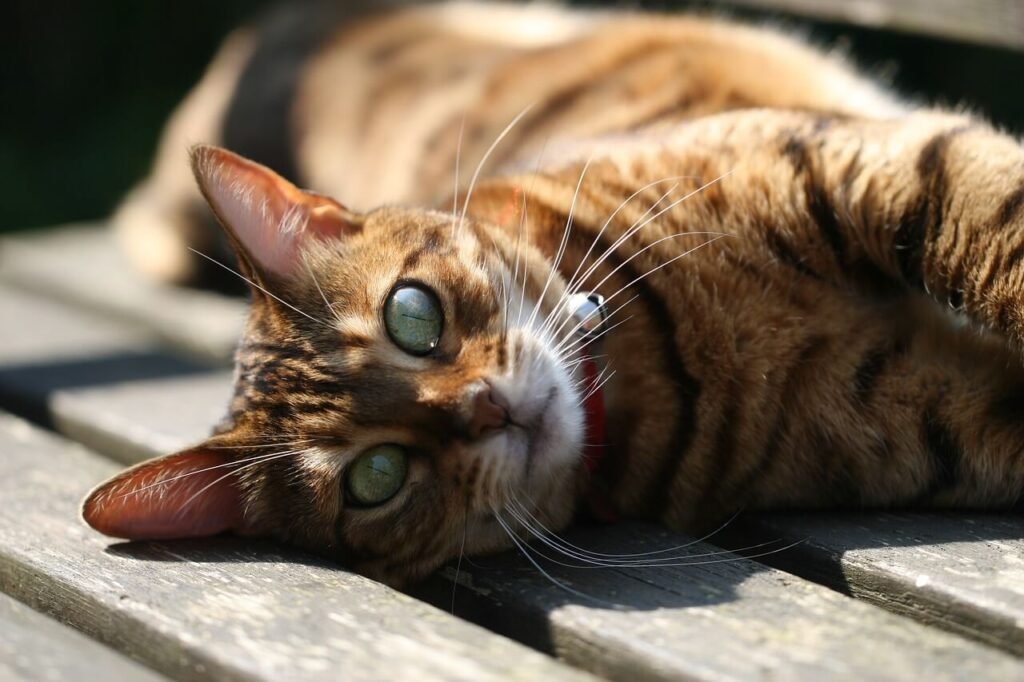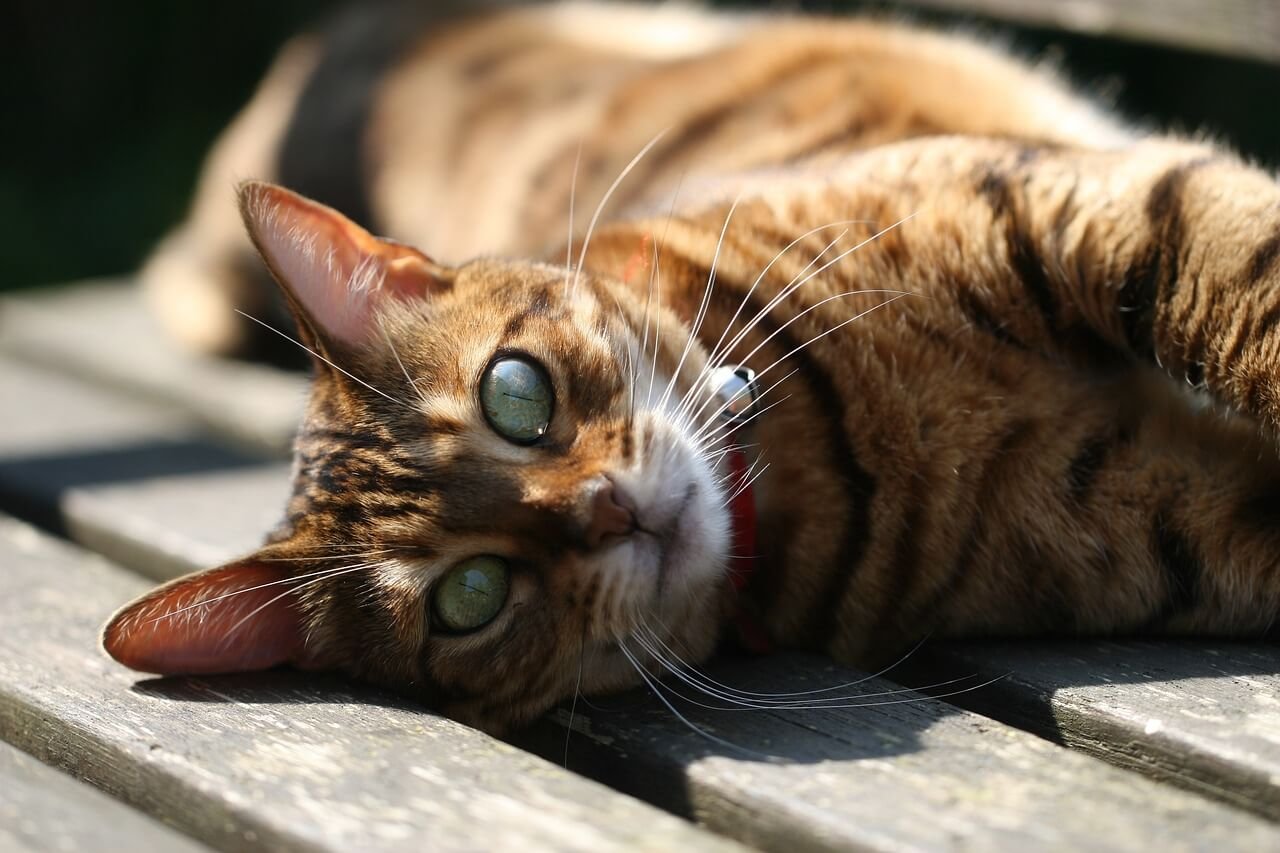How to Trim Angry Cat Claws: A Gentle Guide for Pet Owners
Trimming your cat’s claws can feel like navigating a minefield, especially if your feline friend is known for their fiery temperament. Whether you’re a seasoned pet parent or a first-time cat owner, the thought of handling an angry cat during claw trimming can be daunting. However, with patience, preparation, and the right techniques, you can make this necessary grooming task less stressful—for both you and your furry companion. In this guide, we’ll walk you through everything you need to know about safely trimming your cat’s claws while keeping their mood in check.
Understanding Your Cat’s Behavior Before Trimming
Before diving into the process of trimming your cat’s claws, it’s essential to understand why your cat might act out during this procedure. Cats are naturally sensitive creatures, and their paws are one of their most vulnerable areas. Knowing what triggers their anger can help you approach the task more confidently.
Fear of the Unknown: Many cats become anxious when introduced to unfamiliar tools or routines.
Past Negative Experiences: If your cat has had painful or stressful claw trims before, they may associate the process with discomfort.
Overstimulation: Some cats simply don’t enjoy being handled for extended periods, especially around their paws.
Lack of Trust: If your cat doesn’t feel safe or secure with you, they’re more likely to react aggressively.
Natural Instincts: Cats use their claws for defense, and restraining them can trigger their fight-or-flight response.
By identifying the root cause of your cat’s behavior, you can take steps to address their concerns and create a calmer environment for claw trimming. Remember, understanding your cat’s perspective is the first step toward success.
Essential Tools and Preparations for Claw Trimming
Having the right tools and preparing adequately can make all the difference when trimming your cat’s claws. Proper equipment ensures precision, while preparation helps reduce stress for both you and your cat. Here’s what you’ll need to get started:
Cat Nail Clippers: Invest in a pair specifically designed for cats, as they provide better control and prevent splitting.
Styptic Powder: This is crucial for stopping any accidental bleeding if you cut too close to the quick.
Treats and Rewards: Positive reinforcement goes a long way in calming your cat and building trust.
A Calm Environment: Choose a quiet, familiar space where your cat feels safe and relaxed.
A Helper (Optional): Having someone assist you can make the process smoother, especially with particularly feisty cats.
With these essentials in place, you’re setting yourself up for a successful and stress-free claw-trimming session. Preparation is key to ensuring your cat feels comfortable and secure throughout the process.
Check this guide 👉 Top 4 Best Tools for Every Cat Groomer!
Check this guide 👉 5 Best Cat Combs for Shedding: Grooming Made Easy!
Check this guide 👉 Top 4 Best Cat Perfume Products to Keep Your Feline Fresh!

Tips for Calming Your Cat | Common Mistakes to Avoid |
|---|---|
Use pheromone sprays to create a soothing atmosphere. | Forcing your cat to stay still when they’re upset. |
Offer treats before and after the session. | Ignoring signs of stress, such as growling or hissing. |
Trim claws after playtime when your cat is tired. | Cutting too close to the quick, causing pain and bleeding. |
Speak softly and maintain a calm demeanor. | Rushing the process, which can increase anxiety. |
Gradually desensitize your cat to paw handling over time. | Using dull or improper tools that make the process harder. |
Step-by-Step Guide to Trimming Your Cat’s Claws
Now that you’re prepared, it’s time to dive into the actual process of trimming your cat’s claws. Follow these steps carefully to minimize stress and maximize safety:
Start Slowly: Begin by gently touching your cat’s paws to get them used to the sensation.
Choose the Right Moment: Pick a time when your cat is relaxed, such as after a meal or play session.
Hold the Paw Securely but Gently: Apply just enough pressure to extend the claw without causing discomfort.
Locate the Quick: Identify the pink area inside the claw, which contains nerves and blood vessels—avoid cutting into it.
Trim Small Sections at a Time: Make precise cuts to avoid accidents and give your cat breaks between claws.
By following these steps, you can ensure a smooth and safe claw-trimming experience. Patience and consistency are key to mastering this skill.
Signs Your Cat Is Stressed During Claw Trimming
Even with the best preparation, some cats may still show signs of stress during the claw-trimming process. Recognizing these signals early can help you adjust your approach and prevent escalation.
Hissing or Growling: These vocalizations indicate discomfort or fear.
Swatting or Biting: Physical resistance is a clear sign your cat feels threatened.
Flattened Ears: This body language suggests your cat is feeling defensive.
Panting or Heavy Breathing: Rapid breathing can signal anxiety or distress.
Attempting to Escape: Constant wriggling or fleeing shows your cat is overwhelmed.
If you notice any of these signs, pause the session and give your cat time to calm down. Pushing forward despite their discomfort can damage trust and make future sessions even harder.
Tips for Desensitizing Your Cat to Claw Trimming
Desensitization is a gradual process that helps your cat become more comfortable with having their paws handled. By incorporating these tips into your routine, you can reduce their fear and make claw trimming a less intimidating experience.
Touch Their Paws Regularly: Gently handle your cat’s paws during playtime or cuddles to normalize the sensation.
Introduce the Clippers Slowly: Allow your cat to sniff and inspect the clippers without using them at first.
Reward Calm Behavior: Offer treats or praise whenever your cat allows you to touch their paws.
Practice Short Sessions: Keep desensitization exercises brief to avoid overwhelming your cat.
End on a Positive Note: Always conclude with something your cat enjoys, like a favorite toy or treat.
With consistent effort, desensitization can help your cat associate claw trimming with positive experiences, making future sessions smoother and less stressful.
How to Create a Stress-Free Environment for Claw Trimming
The environment plays a crucial role in how your cat reacts to claw trimming. A calm and familiar setting can significantly reduce their anxiety, making the process easier for both of you.
Choose a Quiet Space: Select a room free from loud noises or distractions, such as the living room or bedroom.
Use Familiar Scents: Incorporate items that smell like your cat, such as their blanket or favorite toy, to provide comfort.
Dim the Lights: Soft lighting can create a soothing atmosphere and help your cat relax.
Keep Tools Out of Sight Initially: Avoid showing the clippers until your cat is settled and calm.
Stay Calm Yourself: Cats are highly attuned to their owner’s emotions, so maintaining a relaxed demeanor is key.
By creating a stress-free environment, you’re setting the stage for a successful claw-trimming session while minimizing your cat’s anxiety.
Alternative Solutions for Managing Cat Claws
If trimming your cat’s claws proves too challenging despite your best efforts, there are alternative solutions to consider. These options can help keep your cat’s claws healthy and your home safe without the need for frequent trimming.
Scratching Posts: Provide a variety of scratching surfaces to encourage natural claw maintenance.
Soft Paws Nail Caps: These vinyl caps are applied to your cat’s claws to prevent damage to furniture and skin.
Regular Playtime: Engage your cat in activities that naturally wear down their claws, such as climbing or chasing toys.
Professional Grooming Services: Seek help from a professional groomer experienced in handling difficult cats.
Claw Trimming Classes: Some pet stores or veterinarians offer workshops to teach owners proper techniques.
While these alternatives may not replace the need for occasional trimming, they can complement your efforts and provide additional peace of mind.
FAQ
How often should I trim my cat’s claws?
Most cats need their claws trimmed every 2-4 weeks, depending on how quickly they grow and how active they are.
What should I do if I accidentally cut the quick?
Apply styptic powder or cornstarch to stop the bleeding and comfort your cat immediately.
Can I trim my cat’s claws alone, or do I need help?
While it’s possible to trim alone, having a helper can make the process easier, especially with energetic or fearful cats.
My cat hates having their claws trimmed. How can I make it less stressful?
Gradual desensitization, positive reinforcement, and choosing the right moment can significantly reduce stress.
Should I trim my indoor cat’s claws?
Yes, indoor cats still need regular claw trims to prevent overgrowth and potential injury.
Final Thoughts: Building Trust Through Patience and Care
Trimming your cat’s claws doesn’t have to be a battle of wills. By approaching the task with empathy, preparation, and respect for your cat’s boundaries, you can transform it into a bonding experience. Remember, every cat is unique, so it may take time to find the method that works best for your furry friend. With consistent effort and a gentle touch, you’ll not only keep your cat’s claws healthy but also strengthen the bond you share. So take a deep breath, gather your tools, and embark on this journey with confidence—you’ve got this!
Canned Pumpkin for Cat Diarrhea: Best 7 Expert Tips! Natural remedy to firm stools, soothe upset bellies, and support gut health safely.
Can a Cat Give You Scabies? Best 7 Expert Tips! Discover the truth about feline mites, human skin risks, and how to protect yourself—without panic.
Cat Flea vs Human Flea: Best 7 Expert Tips! Discover the truth about bites, species, and how to eliminate infestations for good.
Weird Cat Behaviors: Best 7 Expert Tips! Discover why cats do strange things—and how to understand, not punish, their instincts for a happier home.





